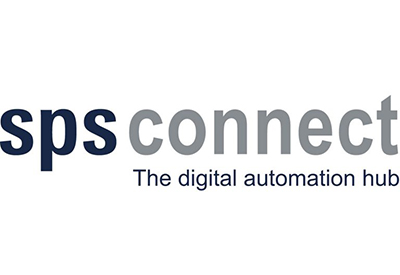Ontario Supporting Innovation in the Life Sciences
July 8, 2024

Life Sciences Innovation Fund helping to advance homegrown medical technologies
The Ontario government is investing $5.5 million to help 11 companies in the life sciences sector develop and launch made-in-Ontario health care technologies and innovations.
“These investments signal our government’s continued commitment to promoting the very best of Ontario’s life sciences sector,” said Vic Fedeli, Minister of Economic Development, Job Creation and Trade. “These ambitious companies demonstrate the innovation, talent and expertise that has the potential to improve lives around the world while creating good-paying jobs at home.”
This investment is part of the province’s $15 million Life Sciences Innovation Fund (LSIF), which was created in 2022 to help entrepreneurs and innovators bring their ideas and prototypes from the lab to the marketplace. The 11 companies listed below will each receive $500,000 to help commercialize their technologies:
- Apiary Therapeutics, located in Toronto, has engineered cells that act as advanced drug delivery vehicles for a patient, offering advantages over traditional methods like repeat injections. Cell-based delivery can be more targeted, cost effective and result in better patient compliance.
- Cohesys Inc., located in Toronto, has created a special adhesive bone tape used by orthopedic surgeons in place of plates and screws for non-loadbearing bone fracture repairs. The technology aims to reduce surgery times with better patient outcomes.
- Gold Sentintel Inc., located in Waterloo, has advanced AI-powered technology that improves quality of life for seniors living in care by identifying early signs of illness and detecting and preventing falls.
- HDAX Therapeutics, located in Mississauga, is pioneering next-generation therapeutics solutions for diseases driven by microtubule dysfunction to achieve better patient outcomes.
- KVR Pharmaceuticals Inc., located in Toronto, has developed products to treat patients with bleeding disorders and related diseases. The company is also exploring how coagulation medicines could be used in the treatment of cancer.
- Noa Therapeutics Inc., located in Toronto, is developing non-steroidal therapies to transform the treatment of immune diseases.
- Novel Biotechnology Inc., located in Vaughan, has created technology that enhances the manufacture of plasmid DNA, which is used to make vaccines and gene therapies.
- Quthero Canada Ltd., located in Toronto, has leveraged bio-engineering technology that helps skin healing and regeneration for dermatology and plastic surgery patients.
- Radialis Inc., located in Thunder Bay, has developed high-definition positron emission tomography (PET) imagers. The technology creates a very clear image of an area of concern in a patient’s body, which helps the clinical team make the best diagnosis and treatment plan.
- Realize Medical Inc., located in Ottawa, is employing virtual reality technology that uses a patient’s medical images to create 3D models, enabling clinicians working remotely to collaborate and better plan surgeries.
- Tenomix Inc., located in London, is using robotics, ultrasound imaging, AI and machine learning to improve the way cancer tissues are processed in pathology laboratories, leading to better-informed treatment decisions for patients.
“The Life Sciences Innovation Fund demonstrates Ontario’s commitment to advancing the life sciences sector,” said Claudia Krywiak, President and CEO of the Ontario Centre of Innovation. “The achievements to date underscore the importance of strategic investment in fostering innovation, economic growth, and societal impact. OCI remains committed to fostering a vibrant and dynamic ecosystem that supports groundbreaking research, commercialization, and job creation.”
The LSIF is part of the province’s Taking Life Sciences to the Next Level, the government’s life sciences strategy to establish Ontario as a global biomanufacturing and life sciences hub. Ontario has also convened a Life Sciences Council, whose work will help inform the next stages of the life sciences strategy.
Quick Facts
- LSIF is delivered by the Ontario Centre of Innovation.
- To date, a total of $8.5 million has been invested through the LSIF, helping 17 companies develop and launch new technologies and leveraging more than $25 million in private sector investments.
- Ontario’s life sciences sector is a key economic driver, employing more than 72,000 people in high-value jobs across 2,000 firms with annual exports exceeding $12 billion.
- Over the last three and a half years, Ontario has attracted $4 billion in investments by global biomanufacturers and life sciences companies.
- More than 70,000 STEM students graduate annually from post-secondary programs across the province, producing one of the most highly skilled life sciences workforces in the world.
- Ontario also recently announced a life sciences-focused investment of $40 million from the Venture Ontario Fund, which was unveiled at the 2024 BIO International Convention in San Diego where Ontario led a delegation of 29 companies and organizations.
Quotes
“I have long said that Mississauga and the GTA is a hub of innovation for medicine, pharmaceuticals, and health sciences. As time goes on, this has only proven increasingly true. Today’s announced investments in the life sciences sector will further cement Ontario as a world leader of expertise in this critical industry.”
– Sheref Sabawy
MPP, Mississauga— Erin Mills
“HDAX is a remarkable success story of the power of translational research taking place in Ontario universities to advance health outcomes and generate economic benefit. From research to startup to market, the University of Toronto’s globally recognized entrepreneurship ecosystem is the place to accelerate discoveries into groundbreaking life science companies like HDAX.”
– Kent Moore
Vice-Principal of Research and Innovation, University of Toronto Mississauga
“We at HDAX Therapeutics are thrilled and grateful to secure the Life Sciences Innovation Fund. This investment validates the vast potential of our technology, while also serving as a testament to the impactful presence of women in STEM. With this funding, we will be able to advance our Ontario-grown IP and advance novel disease-modifying therapies to patients in need.”
– Nabanita Nawar
CEO & Cofounder of HDAX
“Ontario is a powerhouse in the life sciences sector from therapeutics to medical devices to digital health, and genomics/modular hospital infrastructure. These investments in homegrown Ontario companies with made-in-Ontario solutions through the Life Sciences Innovation Fund is another testament to the governments strong support for the sector and its growth, including through female-led companies, promoting diversity and inclusion in the sector.”
– Raed Kadri
Vice President, Strategic Initiatives, Business Development and Head of the Ontario Vehicle Innovation Network at the Ontario Centre of Innovation
Related Story
Ontario Celebrates Launch of Canada’s Largest Biomanufacturing Facility
The Ontario government joined Sanofi to celebrate the grand opening of their new, $800 million vaccine manufacturing facility at its Toronto campus. The new building, spanning approximately 200,000 square feet, will produce pediatric and adult vaccines for pertussis (whooping cough), diphtheria and tetanus, significantly increasing the country’s production of life-saving vaccines for domestic and global markets.








